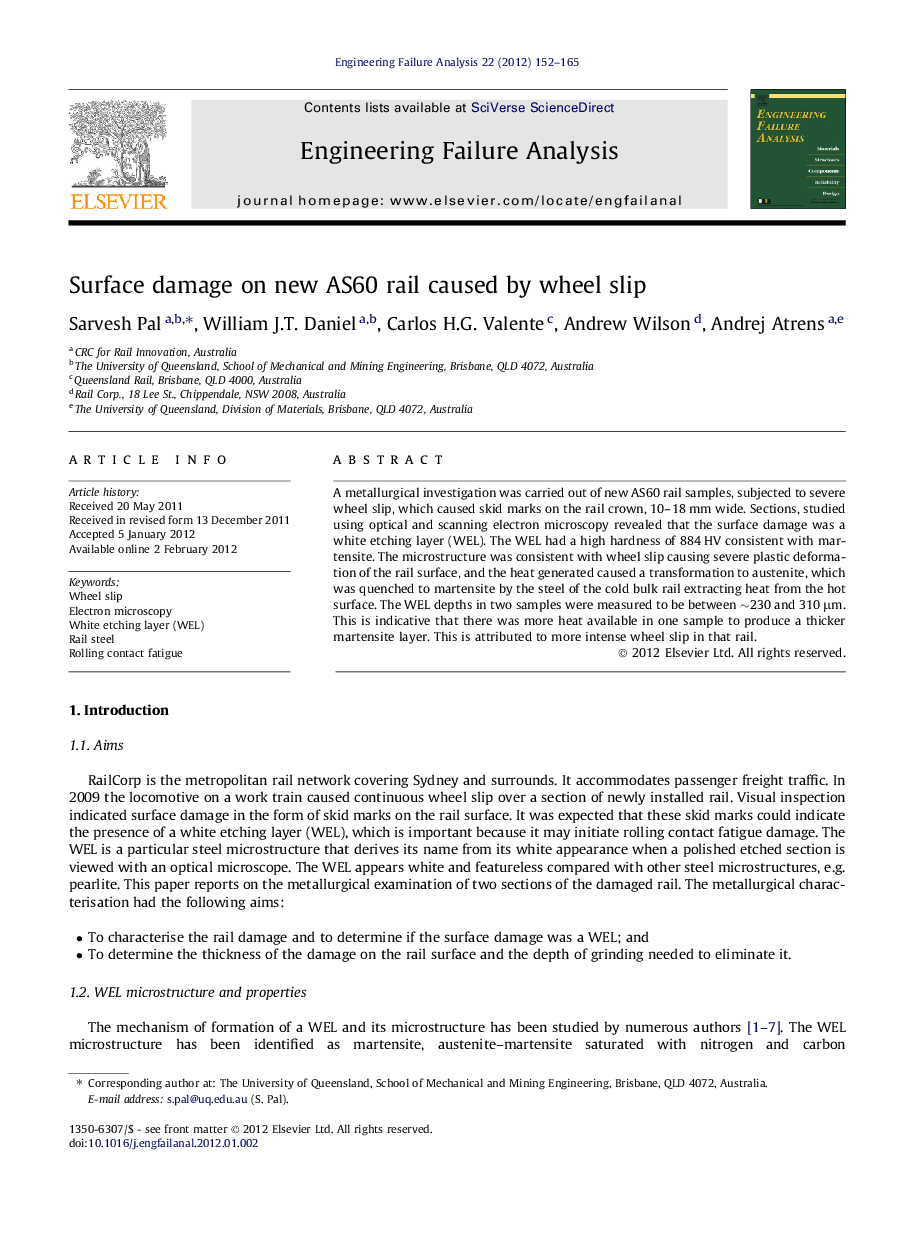| Article ID | Journal | Published Year | Pages | File Type |
|---|---|---|---|---|
| 763634 | Engineering Failure Analysis | 2012 | 14 Pages |
A metallurgical investigation was carried out of new AS60 rail samples, subjected to severe wheel slip, which caused skid marks on the rail crown, 10–18 mm wide. Sections, studied using optical and scanning electron microscopy revealed that the surface damage was a white etching layer (WEL). The WEL had a high hardness of 884 HV consistent with martensite. The microstructure was consistent with wheel slip causing severe plastic deformation of the rail surface, and the heat generated caused a transformation to austenite, which was quenched to martensite by the steel of the cold bulk rail extracting heat from the hot surface. The WEL depths in two samples were measured to be between ∼230 and 310 μm. This is indicative that there was more heat available in one sample to produce a thicker martensite layer. This is attributed to more intense wheel slip in that rail.
► Surface damage of new and never ground rail revealed white etching layer formation. ► The WEL had a high hardness of 880 HV consistent with martensite. ► Plastic deformation due to wheel slip leads to formation of martensitic phase. ► The WEL depth for severely deformed rail was greater than less deformed.
